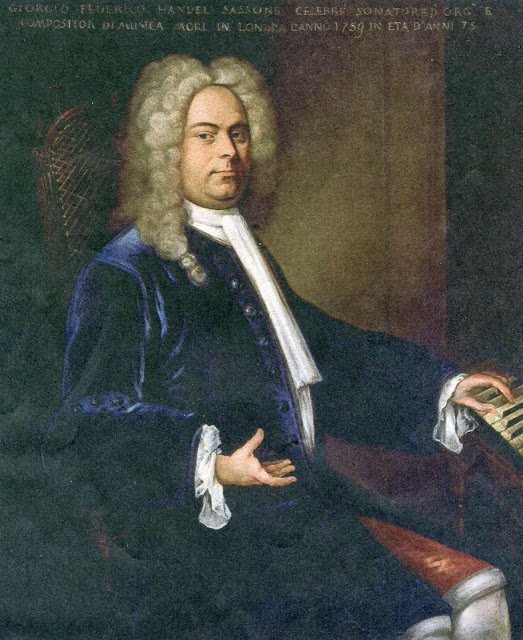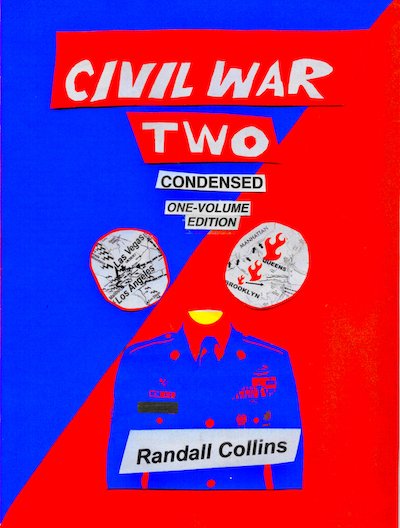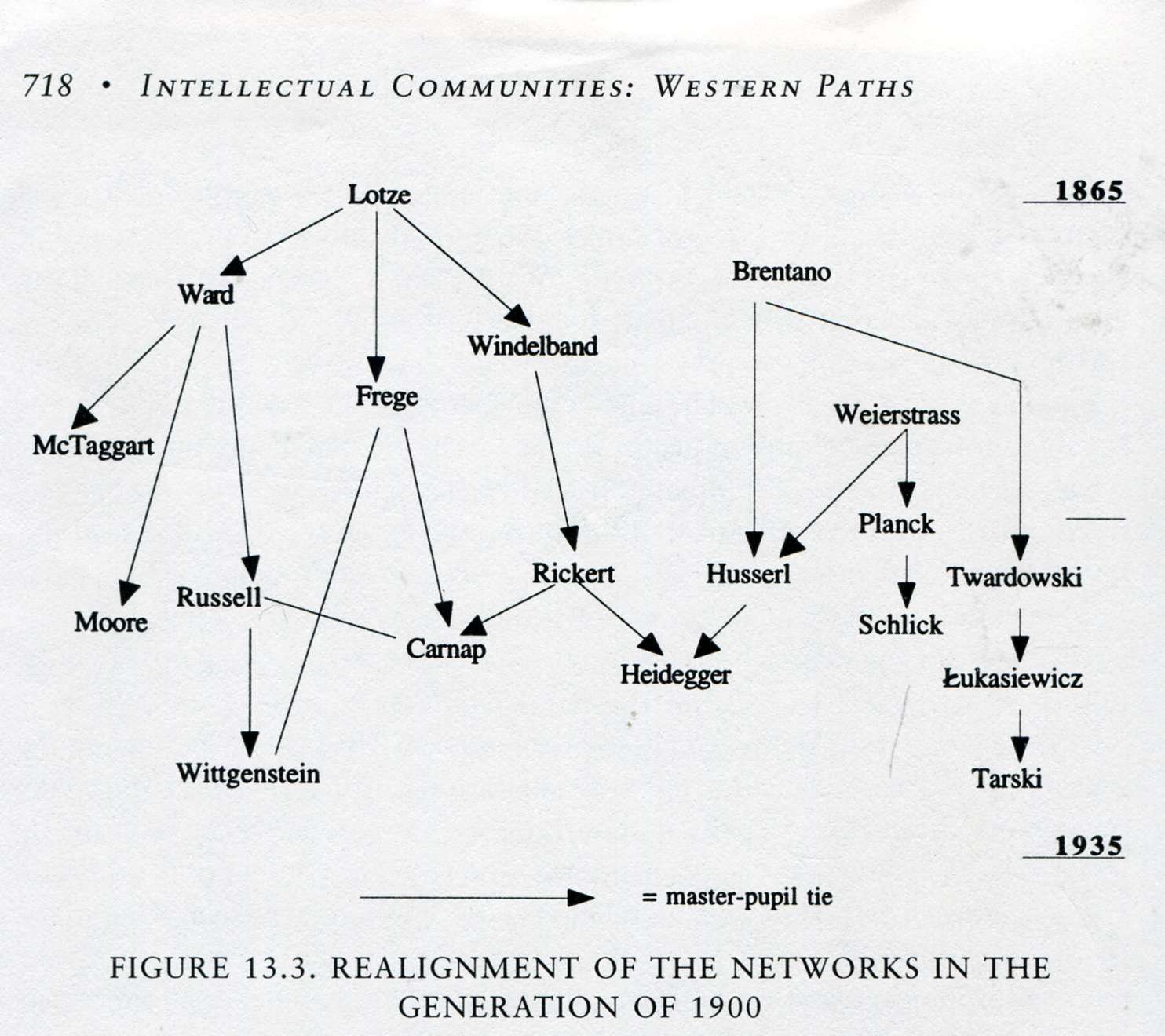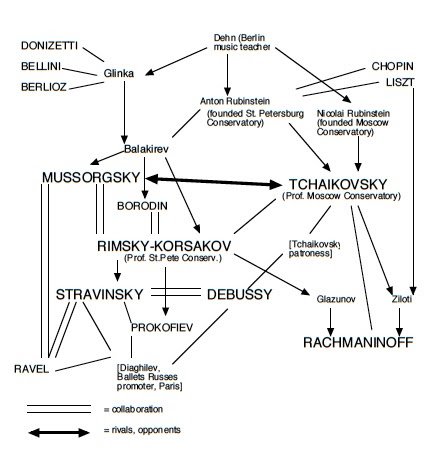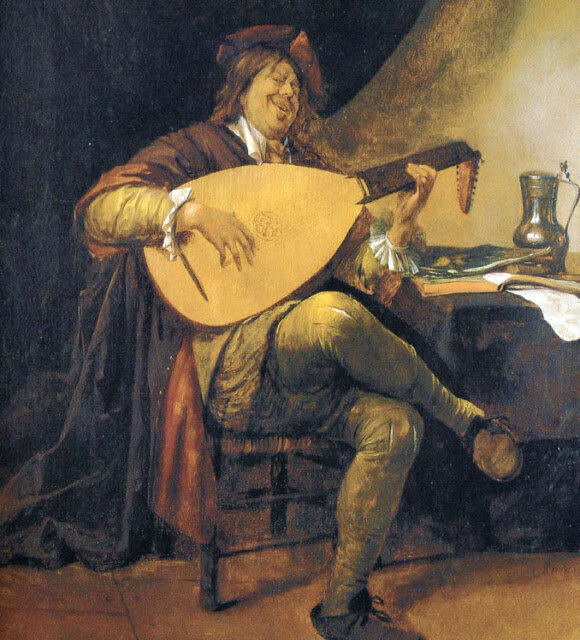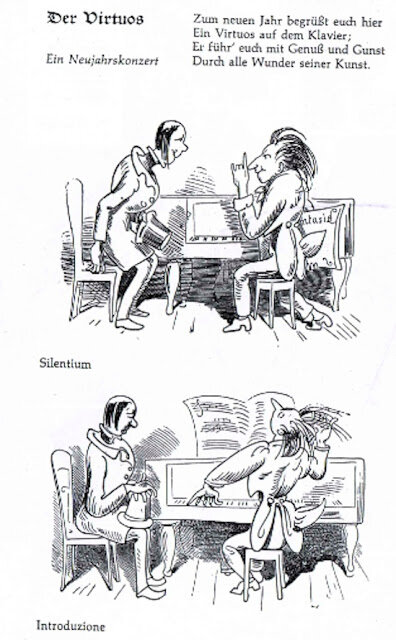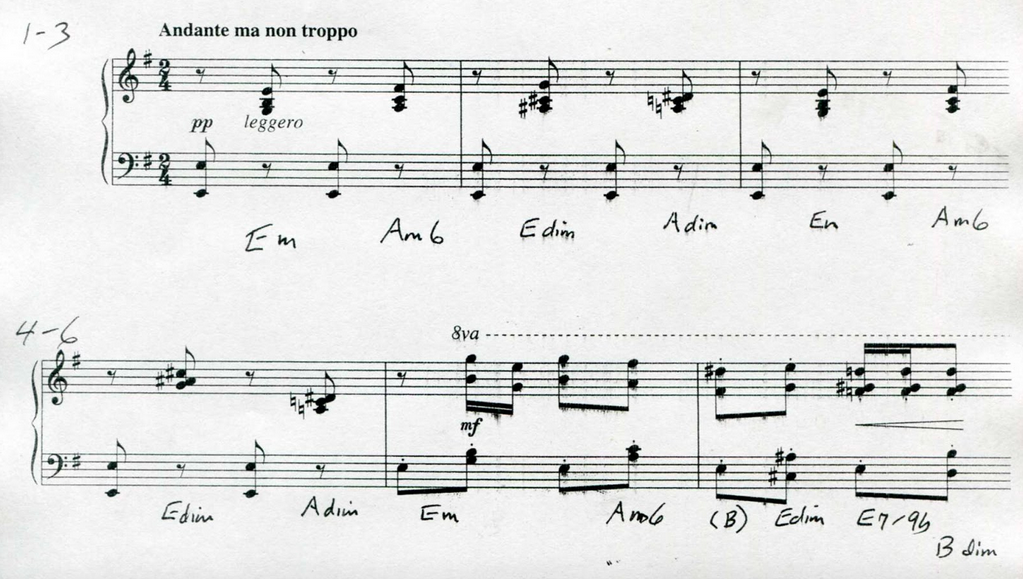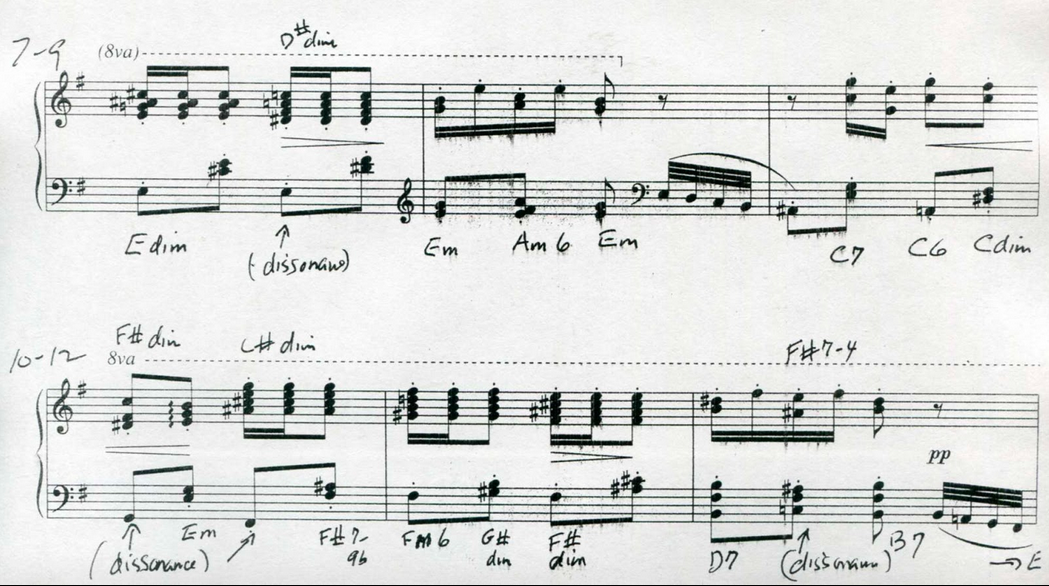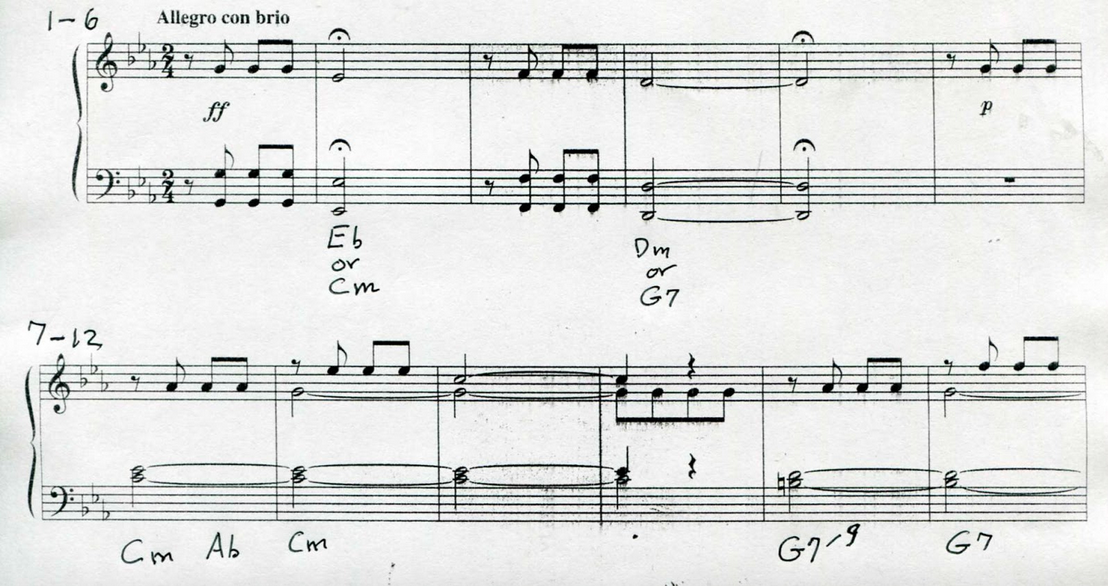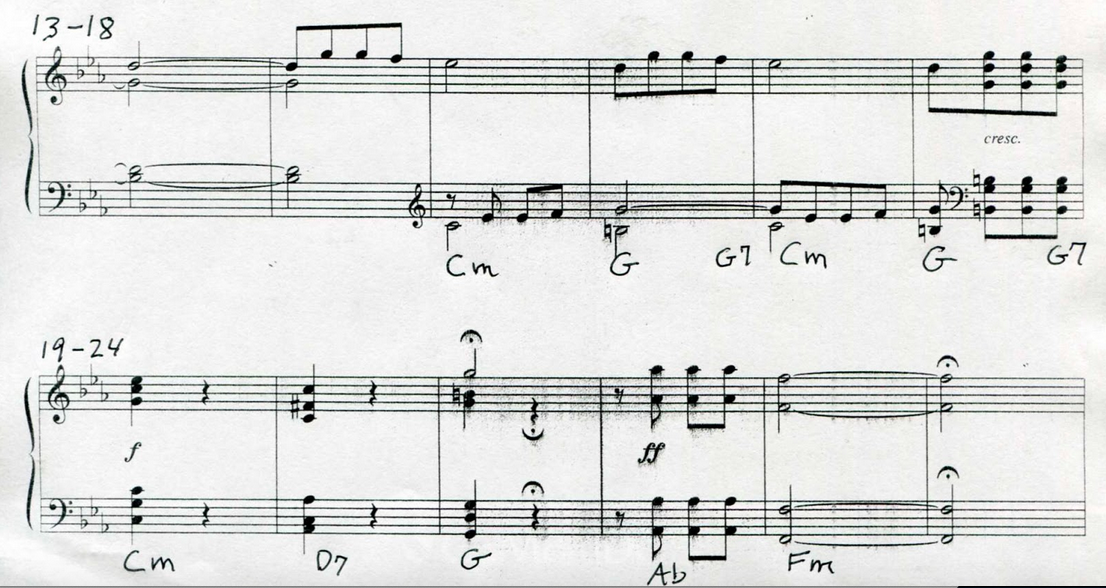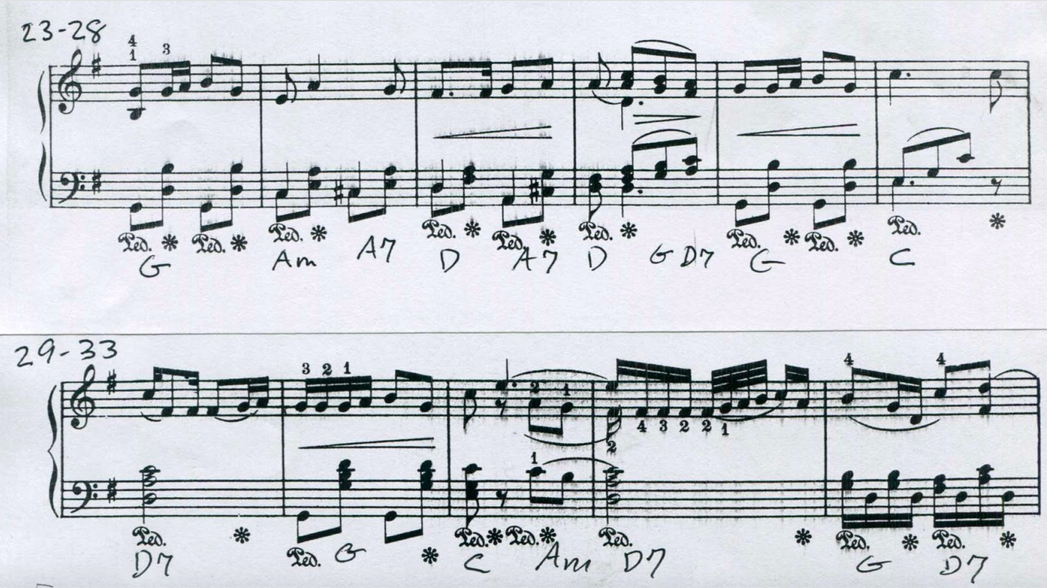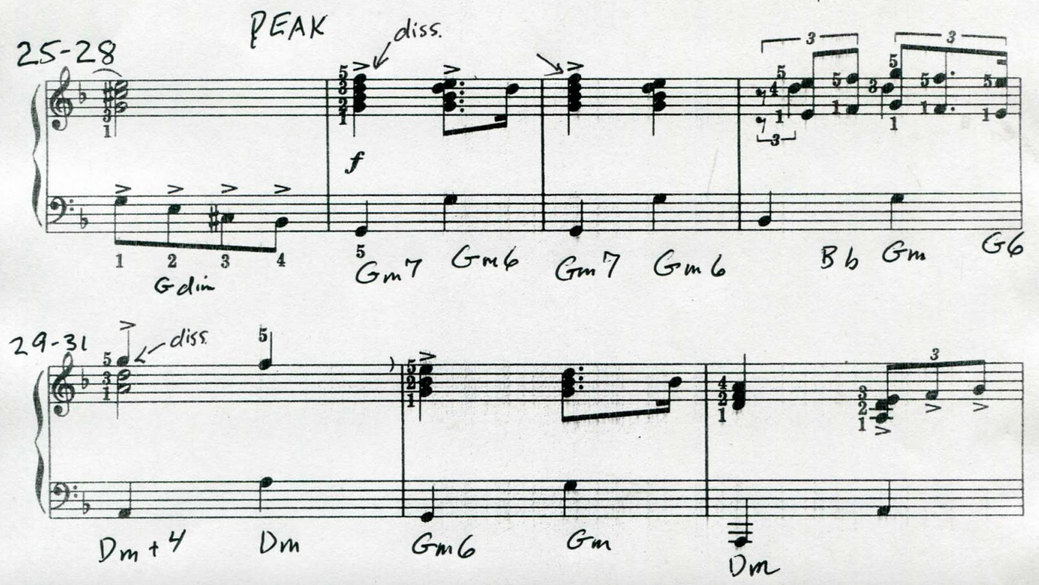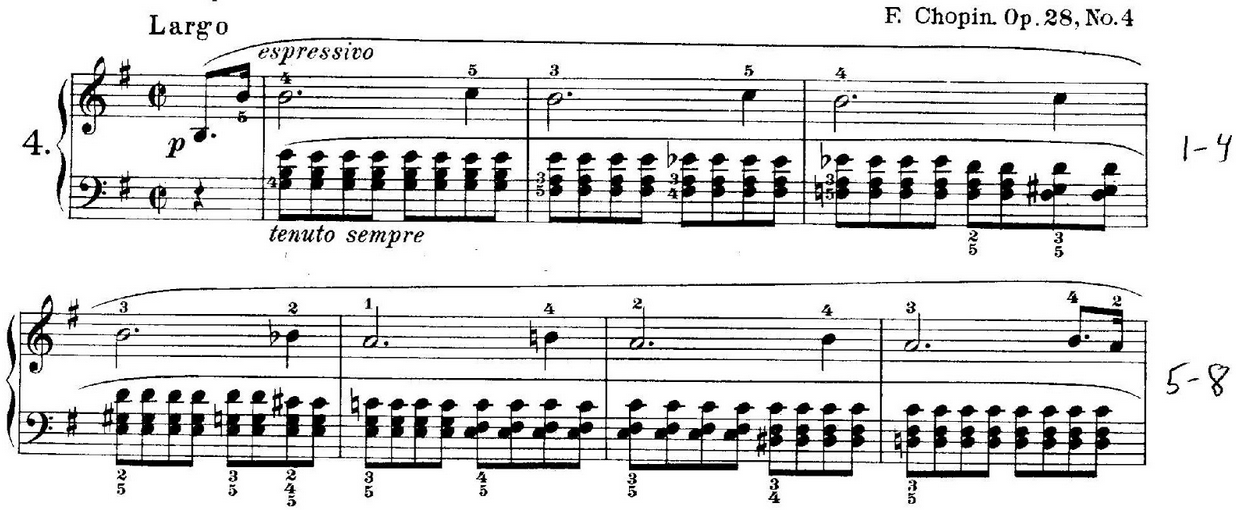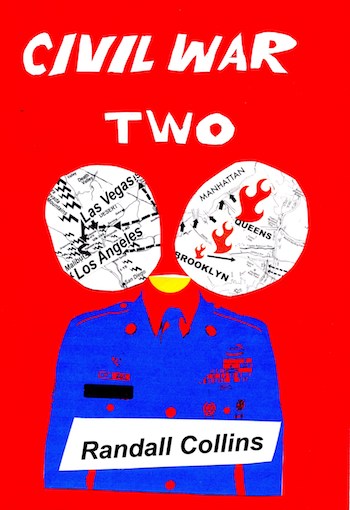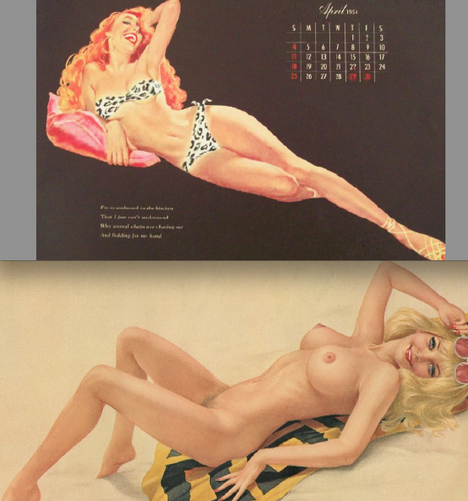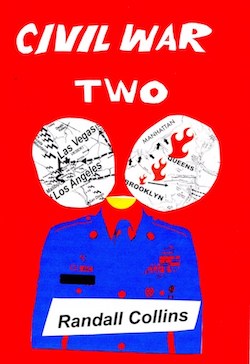James Joyce's creative technique is on display in the Nighttown chapter of Ulysses. The chapter is famously surrealistic. But it is easy to understand once we see how it is put together out of three main ingredients.
(1) A detailed and completely realistic description of sex workers and their customers; plus (2) the blended experience of drunkenness and dreaming, the flow of fantasy and free-association presented with Freud-like faithfulness. In both ingredients, Joyce is a naturalistic writer telling the truths of everyday urban life. But putting the two together, and giving the reader no guidance as to when he is doing one or the other, creates a third effect: (3) reading Ulysses is like cracking a code or solving a puzzle. Joyce is very much a 20th century modernist writer, by keeping the author out of the way and never speaking to the reader in his own voice. Gertrude Stein played the same game-- never explain anything. So did Hemingway, whose simplicity is ostensibly the opposite of Joyce's style. They are all writers of hidden meanings.
Put this another way. Ingredient (1) is Joyce being an ethnographer. Novelists were sociologists before professional field researchers existed. In the Nighttown chapter, Joyce carries forward what previous novelists like Balzac, Dostoyevsky, and Zola had touched on-- prostitution-- but in far more detail, and without either romanticizing it or moralizing about it. Throughout Ulysses, Joyce is a superior ethnographer of the details of everyday life. In Nighttown, and in Molly Bloom's concluding thought-stream about sex, Joyce went further than anyone has done yet-- even today-- on the micro-sociology of sex.
Ingredient (2) is psychological ethnography. The drunken/sleeping fantasies that intrude on the scene are psychologically realistic, what Stephen Dedalus and Leopold Bloom in the red light zone of Dublin on a night in June 1904 would be thinking, or at least have flickering across their minds in dream recollection. Joyce was not the only writer to attempt stream of consciousness. Virginia Woolf did it too, the difference being that her characters are limited to respectable upper-middle class members of her family and her social class; she had no way of exploring the lower-middle-on-down sector Joyce was immersed in. (Woolf found Joyce distasteful, which was partly literary rivalry-- Gertrude Stein didn't like him either-- and partly class bias.) Joyce's creativity here needed only one step. After seeing that the realm of everyday people's thoughts and fantasies are dramatic material, he just had to go ahead and describe as much of it as possible. Like most creativity, it required no continuous flashes of inspiration; only finding a new technique, then the long work of applying it.
Joyce's problem in writing Ulysses was to take a day of ordinary life and make it interesting rather than boring. He made it harder for himself by dispensing with plot, the most artificial aspect of fiction. He took the opposite path from detective stories-- that other modern literary invention-- which are set in ordinary life but with strange things happening at a fast-moving pace. Joyce solved this by cloaking each chapter in a different style, making the book into a puzzle to figure out. The Nighttown chapter is especially successful both in the ethnography-- dealing with the most exciting topic, sex and violence, the police coming and politicians smoothing it over-- and in the Freudian fantasies.
It is possible to take the ingredients apart, to extract from the surrealism a straightforward description of the red light zone, the prostitutes and their customers. Joyce’s 180 page chapter boils down to one-tenth that length. I will present the stripped-down text, Joyce's red light ethnography, at the end of the post.
Preceding Joyce's text, I will summarize what Joyce the sociologist shows about sex work and the world of underground excitement. Joyce turns out to be quite a good sociologist, one reason why he is a great writer.
The Carousing Zone
Nighttown in Dublin in 1904 was literally on the other side of the tracks, behind the railway yards, and down-river near the harbor. It is mostly unpaved, with scanty street lights, a place of sheds and barns (it is still the era of horse-drawn vehicles), mostly low flimsy houses. The up-scale brothels are in a street with more prosperous multi-story buildings. It is a place for the lowest of the poor, beggars, sick and half-crazed people. Dirty and ill-fed children play on the street even at night. It is also a carousing zone, a place where the laws are relaxed, illegal and semi-legal entertainments are available. The night-time population also includes drunken soldiers, sailors, and laborers visiting cheap unlicensed drinking establishments run by “shebeen-keepers.” Joyce’s narrative also shows the presence of medical students and middle-class middle-aged men. Touts, bawds, and street-prostitutes recognize such outsiders immediately as potential customers.
Carousing zones, in one degree or another, have existed in most big cities since the Middle Ages. Their atmosphere is a vacation-break from normal work and respectability; a “holiday from morality” is their chief image and attraction. Various kinds of unlawfulness and immorality are accepted here without question; but as we see, the carousing zone has its own kind of order and rules its members try to enforce.
Stratification of sex-work markets
Joyce’s novel is permeated with sex. Both Bloom, the protagonist, and Mollie, his wife, are pursuing extra-marital affairs; the latter with Blazes Boylan, her concert-promoter, who is portrayed as a dandy and man-about-town in Dublin’s saloons. Stephen’s medical student friends continually joke and brag about sex. All this is amateur sex-- although as Viviana Zelizer (2005. The Purchase of Intimacy) shows, there is no sharp division from paid sex, since receiving gifts and favors is generally part of sexual relationships. Professional sex differs by being much more explicitly bargained, and for short time-periods rather than longer relationships with their bundle of commitments.
What generates the demand for explicitly commercial sex? Customers are those seeking more attractive, or more easily accessible partners than are available to them in the amateur sex market of courtship, dating, and affairs. Famously, this includes soldiers, sailors and travelers away from normal social networks; but also persons whose social class is too low, personality and culture unappealing to potential partners, or who are too unattractive to match up with sexier women. Another advantage of commercial sex is that it is an exchange market where there are very few rejections, unlike (as David Grazian shows) the world of dating, pick-ups, hook-ups, as well as courtship.*
* David Grazian, 2008. On the Make: The Hustle of Urban Nightlife.
Elizabeth Bernstein, 2007. Temporarily Yours. Intimacy, Authenticity, and the Commerce of Sex, describes how work-obsessed Silicon Valley geeks buy upscale prostitutes selling GFE (Girl Friend Experience) since it doesn't waste their time.
It follows that sex markets are stratified. Customers vary in how much money they can offer. Older men of the higher social classes can afford the best-looking women, compensating for their own declining physical attractiveness. Joyce depicts two commercial travelers who have been drinking champagne with Kelleher, a city official, who in turn brings them to the best brothel in Dublin; also a middle-aged customer (bald head, goatee beard, suspenders dragging from his trousers) whom Bloom passes in embarrassed silence on the stairs. Prostitutes reminisce about a priest who tried to disguise his clerical collar under his coat. Further down the customer chain are middle class students, short on cash, like Stephen’s companion Lynch, who toys with the prostitutes but can’t afford to take one until Stephen drunkenly offers part of his teaching pay received that morning. Still further down are the drunken soldiers, who pick up a street girl.
On the seller’s side, prostitutes offer different prices, depending on their attractiveness and the corresponding market of what their customers can afford. Following is a list of Joyce’s sex workers, in ascending order:
An elderly bawd ("famished snaggletooths") trying to upsell middle-class customers by offering a virgin (“ten shillings a maidenhead”). Joyce describes her unappetizingly “in the gap of her dark den furtive, rainbedraggled”.
“Cheap whores, singly, coupled, shawled, dishevelled, call from lanes, doors, corners.”
Cissy Cafferty, on the street with two soldiers (“I’m only a shilling whore.”) [a shilling is 12 pence, 1/20th of a pound. One pound was worth about $120 in today’s money; her price was about $6.]
Several other slangy street whores are called Biddie the Clap and Cuntie Kate, implying disease and gross appearance.
Among the low-class prostitutes is one Bloom fleetingly remembers as his first sex, behind a stable. Another prostitute drifts through a previous chapter (“A frowsy whore with black straw sailor hat askew came glazily into the day along the quay.”) Bloom tries to avoid her; she had offered to do washing for his wife, and they had “an appointment” which Bloom now regards as too risky, as well as seeing that she “looks like a fright in the day.” She reappears in the post-Nighttown chapter when she peers into a late-night shelter looking for customers: (“The face of a streetwalker, glazed and haggard under a black straw hat...”) Bloom dismisses her as “partially idiotic female.”
Higher-class prostitutes are at Mrs. Cohen’s brothel. The sitting room is furnished in middle-class style, with piano, gilt mantlepiece mirror, tapestried wallpaper, and peacock-feather fireplace screen. The women’s prices are ten shillings each [half a pound sterling, equivalent to $60], for a short time, while staying the night is more.
Zoe, the most attractive (a young whore in a sapphire slip, a slim velvet fillet round her throat), is also the boldest and most skilled talker, mixing slang and repartée. Kitty (a bony pallid whore in navy costume, sailor hat, doeskin gloves, coral wristlet, corset, jacket, skirt, white petticoat, boa around her neck) is dressed much more properly than Zoe’s deshabillé. Kitty has polite middle-class manners, apologizing about her coughing and hiccuping-- implying ill health. Florry (a blonde feeble goosefat whore in a tatterdermalion gown of mildewed strawberry, lolls spread-eagle on the sofa corner) is regarded by Kitty as “a bit imbecilic.”
The madam or whoremistress, Mrs. Cohen, is middle-aged, heavy, unattractive, but wears a low-cut evening gown, rings and semi-precious jewels, and flirts behind a showy operatic fan. She is reputed to be on good terms with officials and race-track tipsters, and to have a son at Oxford. She is alert and aggressive at business, and compliments Bloom for not letting himself be short-changed; although later she tries to cheat Stephen out of more money.
Still higher on the scale are the barmaids at the Ormond Hotel, in the earlier “bronze by gold” chapter. Miss Douce and Miss Kennedy go by polite form of address, and are paid enough to dress well and take sea-side vacations. They lord it over the waiters and kitchen servants. Their role is not so much to serve drinks as to attract men to the saloon, where they flirt delicately. Two of the gentlemen-about-town customers play a game with Miss Douce that they call (in cultured French) “Sonnez la cloche” (ring the bell). This consists of her raising her long skirt above the knee and snapping her garter against her thigh. Although she tells Blazes Boylan “You’re the essence of vulgarity,” she smiles superciliously and glides gracefully away. This is reminiscent of Zoe, at Mrs. Cohen’s, depositing her ten shilling note in the top of her stocking. In a more high-class way, Misses Douce and Kennedy have a sex-worker attitude to men, expressed as they look through the saloon window at a top-hatted gentleman riding past in a carriage: “He’s killed looking back,” Miss Douce laughed. “Aren’t men frightful idiots?” “It’s them that has the fine times,” Miss Kennedy answered.
Relationships among the players
If the business is love for sale, there are ambiguous relationships among everyone involved:
Sellers and buyers of sex: Prostitutes and their touts push a mixture of sexual arousal, friendliness, and making the sale at the highest price. Taking advantage of politeness, guilt-tripping, and fair play also enter the mix. Which tactics prevail depends on where in the social ranking the exchange takes place.
The cheap whores call out blatant sexual come-ons: (“How’s your middle leg? Come here till I stiffen it for you.”) When they are turned down, they make insults: (Bawd spits in their trail her jet of venom. “Trinity medicals. All prick and no pence.”)
Zoe starts more indirectly with conversation, moves on to innuendo along with cuddling, feeling Bloom’s pockets and genitals, lets him caress her breasts, and bites his ear gently. This last technique is found in much earlier societies-- biting the lover’s body is prominently mentioned in the Kama Sutra (ca. 200 A.D.), but largely disappeared in the 20th century. Zoe switches tones when Bloom tries to leave her. (“I hate a rotter that’s insincere. Give a bleeding whore a chance.”) This mixture of aggression and guilt-tripping works on Bloom, who apologizes for his bad manners and resumes conversation. She then offers a deal: “Have you cash for a short time? Ten shillings?” They go inside and he bows politely to “two sister whores” at the doorstep.
Inside, Lynch (who has no money) is lifting the skirts of the prostitutes, getting what sex thrills he can for free. When Mrs. Cohen enters, she makes them stop playing around: (“This isn’t a musical peepshow. Who’s paying here?”), herself playing the teamwork game of good cop, bad cop.
Competition among sellers. Sex business is rarely booming, and the prostitutes compete for customers. They do this by invidious comparisons, some more strident than others: (The Bawd: “You won’t get a virgin in the flash houses. Sixty-seven [a street number] is a bitch.”) Zoe’s competitive advertising is subtler: (Bloom: “Is this Mrs Mack’s?” Zoe: “No, eightyone, Mrs. Cohen’s You might go farther and fare worse.”) Mrs. Cohen is aware of her standing. When Stephen creates a drunken disturbance, she declares: “Here, none of your tall talk. This isn’t a brothel. A ten-shilling house.” Bloom tells her: “But he’s a Trinity student. Patrons of your establishment. Gentlemen that pay the rent. “She replies angrily: “Trinity! Coming down here, ragging after the boat races and paying nothing.” Class conflict comes to the surface, although it quiets down when a cab drives up with more gentlemen customers.
Inside the brothel, there is a tone of put-downs between some of the prostitutes. But on the whole, they stay on friendly terms. This is typical of sex workers, since they generally spend much time in each other’s company, and there are long boring spells waiting for customers. Overall the strongest solidarity in the red light district is among prostitutes who work together. Their implicit rivalry is expressed mainly against sex workers of a different rank, especially those they regard as underselling them or displaying too much sex in the bargaining phase. The structure generates its own morality.
Relationships among customers: Male customers ignore each other. Bloom avoids meeting eyes with the punter in the stairwell by turning his head to examine the hall table. The two gentlemen (“two silent lechers”) arriving by cab try to enter unobtrusively, while Bloom again averts his gaze. Why is there no atmosphere of camaraderie among all those “out for a good time”? Research on red light zones and sex clubs shows the same pattern; a group of men may be jolly together passing by looking at prostitutes, but they rarely break off from the group to engage a woman in bargaining. Prostitutes regard such groups as lookers; actual customers are those who leave the group, such as when they are drinking in a bar, to return alone. The solidarity of the male group itself is a strong rival to the mutual absorption, the temporary folie-à-deux of the erotic pair. Sexual adventuring, like violence, has a strong element of pretence, more talk than action. [Grazian, On the Make.]
Quarrels and fights
Stephen has been brought to the brothel after a drinking party by his friend Lynch. But their concerns are deeply split: Lynch wants to flirt with the prostitutes, hoping to cadge enough money to hire one of them. Stephen is aimless, upset about the death of his religious mother and his own failed vocation as a priest. They don’t provide any solidarity for each other, and Stephen is badgered by Mrs. Cohen into paying for three prostitutes. Next, he starts swinging his walking stick wildly—subjectively at his drunken fantasies, but in fact doing a little symbolic property damage to Mrs. Cohen’s sitting room, which is one way to reassert his will. Bloom, who has a good financial head, settles the dispute with a token payment.
Outside on the street, Stephen has gotten into another quarrel, this time with two British soldiers. Considering this is the red light district, nevertheless it is interpreted as a matter of honour, even sexual jealousy. Cissy, a street prostitute, is alarmed when Stephen (probably inadvertently) runs up behind her, while her two soldiers are off taking a piss. “But I’m faithful to the man that’s treating me though I’m only a shilling whore.” *
*The term “treating” existed in the US at the turn of the century, meaning a kind of dating relationship, where the man paid for entertainment and gifts, and a certain amount of sexual intimacy was expected. Truman Capote comments that the main character in Breakfast at Tiffany’s --set in New York City in the 1940s-- is a “treats girl” who make her living by meeting wealthy men in bars, then asking them for $20 (a lot of money in pre-inflation times) to tip the maid in the ladies’ room. Elizabeth Taylor’s character in Butterfield Eight, based on John O’Hara’s realistic novel of the 1930s, is also a treats girl.
In Joyce’s Dublin, here is the morality of a sex worker: while she is with a customer, he gets all her attention. The soldiers regard it the same way, and accuse Stephen of insulting her. When the fight is about to happen, she seizes the soldier’s sleeve, and cries: “Amn’t I with you? Amn’t I your girl? Cissy’s your girl.”
The fight takes a number of moves to escalate. Of the two soldiers, Private Carr does all the direct aggression, addressing Stephen and uttering a string of curses. His chum, Private Compton urges him on: “Biff him Harry.” And later, as Bloom tries to intervene to prevent the fight: “Go it, Harry. Do him one in the eye.”
Stephen is mostly aloof, makes supercilious answers to Private Carr’s threats, looks up at the sky; at one point he nervously puts his arm on Private Carr’s sleeve, and semi-apologizes: “I understand your point of view...” although continuing with his rambling thoughts. Private Carr now picks up a new line of imputed insult, no longer about his girl, but about his king. Through a series of six utterances, as Stephen tries to retreat, Private Carr escalates verbally, from: “What are you saying about my king? / I’ll wring the neck of any bugger says a word against my fucking king. / I’ll wring the neck of any fucking bastard says a word against my bleeding fucking king. / I’ll do him in, so help me fucking Christ! I’ll wring the bastard fucker’s bleeding blasted fucking windpipe!” Piling on the obscenities operates as a ritual incantation; each utterance repeats part of the previous and adds to it, although the effect of this is to show no great respect for the king or anyone else invoked in aid. *
*Joyce accurately describes the process of cursing. As Jack Katz (“Pissed Off in L.A.” in 1999, How Emotions Work ), has shown with the curses drivers make at each other in road rage incidents, cursing pumps you up; it is what I have called self-entrainment, getting entrained in the rhythm of one’s emotion.
Ultimately Private Carr breaks away from his girl who is holding him back, rushes at Stephen and knocks him down. It is a one-punch fight, total domination; this is typical of most casual fights among the unacquainted, consisting of one “sucker punch.” As an informant told me about bar fights: the first to decide there is going to be a fight usually wins.
Private Carr is looking for a fight; he has worked himself up; he is strong and a competent fighter and has found a weak, diffident victim, all of which are ingredients for the most typical kind of fighting, attacking the weak. In real life, most fights are ugly, unfair, and not at all honorable except in the partisan mind of the attacker.**
** The audience plays an important role. Observational and video research [Collins, 2008. Violence: A Micro-sociological Theory] shows that fights are longer and more intense when the audience cheers on the fighters; short and abortive when the crowd is divided or indifferent; and quickly end when bystanders intervene.
An excited crowd has gathered, but they dispute among themselves in a cacophony of voices who is to blame or even what is going on. Private Compton offers crucial social support. Not only egging on his chum; he attempts to control the crowd, waving them back, and calling out “Fair play, here.” He is invoking the rules of a classic duel or fair fight, one-on-one, while the audience watches. This is a second major form of fighting, where the audience by assuming the role of spectators puts the contenders under pressure to perform. Cissy immediately recognizes the honorific form, and cries out: “They’re going to fight! For me!”
Cooling out the cops
The aftermath of the fight is equally realistic. The police arrive. Private Compton tries to drag his chum away: “Here bugger off, Harry. There’s the cops!” Too late, the police start asking for identities. The privates go back to their line about being insulted with their lady. Bloom asserts his civic standing: “I’m a witness. Constable, take his regimental number.” Giving orders to a police officer rarely works [Donald Black, 1980. The Manners and Customs of the Police.], and the cop responds: “I don’t want your instructions in the discharge of my duty.” Private Compton takes advantage of the turn of attention to drag off his comrade, who has found a new target to swear at.
The cop now is about to take Stephen’s name and address, when Bloom spies an acquaintance in the crowd, Cornelius Kelleher, the city official who had brought two gentlemen to the brothel. Bloom whispers about network connections: “Simon Dedalus’ son. A bit sprung.” Kelleher adopts a different approach with the police. “That’s all right, I know him. Won a bit at the races./ Leave it to me, sergeant. That’ll be all right. We were often as bad, ay or worse. What? Eh, what? The police are reluctant to change an investigation they have already started, but they disperse the crowd (which gives them more privacy), and gradually fall into Kelleher’s mood-- calming things down, drawling, laughing, invoking an informal tone, above all pulling them into his rhythm. “Come and wipe your name off the slate.” (He lilts, wagging his head, then imitates a drunken song.) “What, eh, do you follow me?” The second officer finally says: “Ah, sure we were too.” Bloom joins in, shakes hands all around, offering polite thanks and confidential explanations. The artificial and embarrassed quality of the parting is displayed as they all repeatedly wish each other goodnight.
Respectability and embarrassment
Now Kelleher and Bloom have to cool each other out, as middle-class citizens meeting in the midst of the brothel district. Kelleher continues to laugh and to make light of the whole series of events, while explaining his purely incidental part in bringing the visiting commercials to Mrs. Cohen’s. Not that he is a prude: “Sure they wanted me to join in... No, by God, says I. Not for old stagers like myself and yourself. (He laughs again and leers with lackluster eye.) Thanks be to God we have it in the house what, eh, do you follow me? Hah! hah! hah!” Bloom tries to laugh: “He, he, he.” They ignore each other’s excuses and turn their attention to Stephen, still knocked out on the ground. Kelleher has been asked to help carry Stephen away in the cab, but he lets it drop. The ride would have prolonged the embarrassing situation of being together. As the horse-cab turns around and leaves, they act out a pantomime: Kelleher, Bloom, and the cabbie all pretending to be mirthful about witnessing lapses from propriety.
Joyce captures better than anyone the maneuvers people go through on the borders between underground adventure and respectability. Historically, neither side has gone away.* This is another reason why sex is good material for literature.
* Randall Collins, “Why does Repression Exist?”
Following is the stripped-down version of Joyce’s text, omitting the fantasies. Extracts are in sequence without breaks, elisions left unmarked. [In brackets are my brief summaries of omitted action.]
JOYCE’S NIGHTTOWN CHAPTER-- ETHNOGRAPHIC VERSION
The Mabbot Street entrance to nighttown. Rows of flimsy houses with gaping doors. Rare lamps with faint rainbow fans.
Calls: Wait, my love, and I’ll be with you.
The Bawd. (The famished snaggletooths of an elderly bawd protrude from a doorway. Her voice whispering huskily.) Sst! Come here till I tell you. Maidenhead inside. Sst.
[Stephen passes with his companion Lynch, making irrelevant remarks.]
The Bawd: (spits in their trail her jet of venom.) Trinity medicals. Fallopian tube. All prick and no pence.
[Bloom appears.]
The Bawd: Ten shillings a maidenhead. Fresh thing was never touched. Fifteen. There’s no-one in it only her old father that’s dead drunk. (She points. In the gap of her dark den furtive, rainbedraggled Bridie Kelly stands.)
(Weak squeaks of laughter are heard, weaker.)
The Bawd: He’s getting his pleasure. You won’t get a virgin in the flash houses. Ten shillings. Don’t be all night before the polis in plain clothes see us. Sixtyseven is a bitch.
(Bloom passes. Cheap whores, singly, coupled, shawled, dishevelled, call from lanes, doors, corners.)
The Whores: Are you going far, queer fellow? How’s your middle leg? Got a match on you? Eh, come here till I stiffen it for you.
(He plodges through their sump towards the lighted street beyond. From a bulge of window curtains a gramophone rears a battered brazen trunk. In the shadow a shebeen-keeper haggles with a navvy and two redcoats.)
The Navvy: (belching) Where’s the bloody house?
The Shebeen-keeper: Purdon street. Shilling a bottle. Respectable woman.
The Navvy: (Gripping the two redcoats, staggers forward with them.) Come on, you British army!
Private Carr: He ain’t half balmy.
Private Compton: (Laughs.) What ho!
(Zoe Higgins, a young whore in a sapphire slip, closed with three bronze buckles, a slim black velvet filet round her throat, nods, trips down the steps and accosts Bloom.)
Zoe: Are you looking for someone? He’s inside with his friend.
Bloom: Is this Mrs Mack’s?
Zoe: No, eightyone. Mrs Cohen’s. You might go farther and fare worse. Mother Slipperslapper. (Familiarly.) She’s on the job herself tonight with the vet, her tipster, that gives her all the winners, and pays for her son in Oxford. Working overtime but her luck’s turned today. (Suspiciously.) You’re not his father, are you?
Bloom: Not I!
Zoe: You both in black. Has little mousey any tickles tonight?
(His skin, alert, feels her fingertips approach. A hand slides over his left thigh.)
Zoe: How’s the nuts?
(Her hand slides into his left trouser pocket and takes out an object.)
Zoe: For Zoe? For keeps? For being so nice, eh?
(She puts it greedily into a pocket, then links his arm, cuddling him with supple warmth. He smiles uneasily. He gazes in the tawny crystal of her eyes, ringed with kohol. His smile softens.)
Zoe: You’ll know me next time.
(Gazelles are leaping, feeding on the mountains. Near are lakes. Round their shores file shadows black of cedargroves. Aroma rises, a strong hairgrowth of resin. It burns, the orient, a sky of sapphire, cleft by the bronze flight of eagles. Under it lies the womancity, nude, white, still, cool, in luxury. A fountain murmurs among damask roses. Mammoth roses murmur of scarlet winegrapes. A wine of shame, lust, blood exudes, strangely murmuring.)
(Zoe murmuring singsong with the music.)
Bloom: (Fascinated.) I thought you were of good stock by your accent.
Zoe: And you know what thought did?
(She bites his ear gently with little goldstopped teeth sending on him a cloying breath of stale garlic.)
Bloom: (Draws back mechanically caressing her right bub with a flat awkward hand.) Are you a Dublin girl?
Zoe: (Catches a hair deftly and twists it to her coil.) No bloody fear. I’m English. Have you a swaggerroot?
Bloom: Rarely smoke, dear. Cigar now and then. (Lewdly.) The mouth can be better engaged than with a cylinder of rank weed.
[Bloom talks at length, says farewell.]
Zoe: (Stiffly, her finger in her neckfillet.) Honest? Till the next time. (She sneers.) Suppose you got up the wrong side of the bed or came too quick with your best girl. O, I can read your thoughts.
Bloom: (Bitterly.) Man and woman, love, what is it? A cork and bottle.
Zoe: (In sudden sulks.) I hate a rotter that’s insincere. Give a bleeding whore a chance.
Bloom: (Repentantly.) I am very disagreeable. You are a necessary evil. Where are you from? London?
Zoe (Glibly.) Hog’s Norton where the pigs play the organs. I’m Yorkshire born. (She holds his hand which is feeling for her nipple.) I say, Tommy Tittlemouse. Stop that and begin worse. Have you cash for a short time? Ten shillings?
Bloom: (Smiles, nods slowly.) More, houri, more.
Zoe: And more’s mother. (She pats him offhandedly with velvet paws.) Are you coming into the music room to see our new pianola? Come and I’ll peel off.
Bloom: (Feeling his occiput dubiously with the embarrassment of a pedlar gauging the symmetry of her peeled pears.) Somebody would be dreadfully jealous if she know.
Zoe: (Flattered.) What the eye can’t see the heart can’t grieve for. (She pats him.) Come.
Zoe: Silent means consent. (With little parted talons she captures his hands, her forefinger giving to his palm the pass touch of secret monitor, luring him to doom.) Hot hands cold gizzard.
(He hesitates amid scents, music, temptations. She leads him towards the steps, drawing him by the odour of her armpits, the vice of her painted eyes, the rustle of her slip in whose sinous folds lurks the lion reek of all the male brutes that have possessed her.)
(Zoe and Bloom reach the doorway where two sister whores are seated. They examine him curiously from under their pencilled brows and smile to his hasty bow. He trips awkwardly.)
(She crosses the threshold. He hesitates. She turns and, holding out her hands, draws him over. On the antlered rack of the hall hang a man’s hat and waterproof. A door on the return landing is thrown open. A man in purple shirt and grey trousers, brownsocked, passes with an ape’s gait, his bald head and goatee beard upheld, hugging a full waterjugjar, his twotailed black braces dangling at heels. Averting his face quickly Bloom bends to examine the halltable; then follows Zoe into the musicroom. A shade of mauve tissuepaper dims the light of the chandelier. The floor is covered with an oilcloth mosaic, footmarks stamped over it, a morris of shuffling feet without body phantoms, all in a scrimmage higgledypiggledy. The walls are tapestried with a paper of yewfronds and clear glades. In the grate is spread a screen of peacock feathers.)
(Lynch squats crosslegged on the hearthrug, his cap back to front. With a wand he beats time slowly. Kitty Ricketts, a bony pallid whore in navy costume, doeskin gloves rolled back from a coral wristlet, a chain purse in her hand, sits perched on the edge of the table swinging her leg and glancing at herself in the gilt mirror over the mantelpiece. A tag of her corset lace hangs slightly below her jacket. Lynch indicates mockingly the couple at the piano.)
Kitty: (Coughs behind her hand.) She’s a bit imbecilic. (Lynch lifts up her skirt and white petticoat with a wand. She settles them down quickly.) Respect yourself. (She hiccups, then bends quickly her sailor hat under which her hair glows, red with henna.) O, excuse!
(The wand in Lynch’s hand flashes: a brass poker. Stephen stands at the pianola on which sprawl his hat and ashplant. With two fingers he repeats once more the series of empty fifths. Florry Talbot, a blonde feeble goosefat whore in a tatterdermalion gown of mildewed strawberry, lolls spread-eagle in the sofa corner, her limp forearm pendent over the bolster, listening.)
Kitty: (Hiccups again with a kick of her horsed foot.) O, excuse!
Zoe: (Promptly.) Your boy’s thinking of you. Tie a knot on your shift.
(Kitty Ricketts bends her head. Her boa uncoils, slides, glides over the shoulder, back, arm, chair to the ground. Lynch lifts the curled caterpillar on his wand. She snakes her neck, nestling. Stephen glances behind at the squatted figure with its cap back to the front.)
Zoe: Who has a fag as I’m here?
Lynch: (Tossing a cigarette onto the table.) Here.
Zoe: (Her head perched aside in mock pride.) Is that the way to hand the pot to a lady? (She stretches up to light the cigarette over the flame, twirling it slowly, showing the brown tufts of her armpits. Lynch with his poker lifts boldly a side of her slip. Bare from her garters up her flesh appears under the sapphire a nixie’s green. She puffs calmly at her cigarette.) Can you see the beauty spot on my behind?
Lynch: I’m not looking.
Zoe: (Makes sheep’s eyes.) No? You wouldn’t do a less thing. Would you suck a lemon?
(Squinting in mock shame she glances with sidelong meaning at Bloom, then twists round towards him pulling her slip free of the poker. Blue fluid again flows over her flesh. Bloom stands, smiling desirously, twirling his thumbs.)
Zoe: There was a priest down here two nights ago to do his bit of business with his coat buttoned up. You needn’t try to hide, I says to him. I know you’ve a Roman collar.
Lynch: I hope you gave the good father a penance. Nine glorias for shooting a bishop.
Zoe: (Spouts walrus smoke through her nostrils.) He couldn’t get a connection. Only, you know, sensation. A dry rush.
(The door opens. Bella Cohen, a massive whoremistress enters. She is dressed in a threequarter ivory gown, fringed round the hem with tasselled selvedge, and cools herself, flirting a black horn fan like Minnie Hauck in Carmen. On her left hand are wedding and keeper rings. Her eyes are deeply carboned. She has a sprouting mustache. Her olive face is heavy, slightly sweated and fullnosed, with orange-tainted nostrils. She has large pendant beryl eardrops. )
Bella: My word! I’m all in a mucksweat.
(She glances around her at the couples, Then her eyes rest on Bloom with hard insistence. Her large fan winnows wind towards her heated face, neck and embonpoint. Her falcon eyes glitter.)
The Fan: (Flirting quickly, then slowly.) Married, I see.
Bloom: (Approaches Zoe.) Give me back that potato, will you?
Zoe: Here. (She hauls up a reef of her slip, revealing her bare thigh and unrolls the potato from the top of her stocking.) Those that hides knows where to find.
Bella: (Frowns.) This isn’t a musical peepshow. And don’t you smash that piano. Who’s paying here?
(She goes to the pianola. Stephen fumbles in his pocket and, taking out a banknote by its corner, hands it to her.)
Bella: (Looks at the money, then at Zoe, Florry and Kitty.) Do you want three girls? It’s ten shillings here.
Stephen: (Delightedly.) A hundred thousand apologies. (He fumbles again and takes out and hands her two crowns.)
(Bella goes to the table to count the money while Stephen talks to himself in monosyllables. Zoe bounds over to the table. Kitty leans over Zoe’s neck. Lynch gets up, rights his cap, and clasping Kitty’s waist, adds his head to the group.)
Florry: (Strives heavily to rise.) Ow! My foot’s asleep. (She limps over to the table. Bloom approaches.)
Bella, Zoe, Kitty, Lynch, Bloom: (Chattering and squabbling.) The gentleman... ten shillings... paying for the three... allow me a moment... this gentleman pays separate... who’s touching it? ... ow... mind who you’re pinching... are you staying the night or a short time?... who did? ... you’re a liar, excuse me ... the gentleman paid down like a gentleman... drink... it’s long after eleven.
Zoe: (lifting up her pettigown and folding a half sovereign into the top of her stocking.) Hard earned on the flat of my back.
Lynch: (Lifting Kitty from the table.) Come!
Kitty: Wait. (She clutches her two crowns.)
Florry: And me?
Lynch: Hoopla! (He lifts her, carries her and bumps her down on the sofa.)
Bloom: (Quietly lays a half sovereign on the table between Bella and Florry.) So. Allow me. (He takes up the pound note.) Three times ten. We’re square.
Bella: (Admiringly.) You’re such a slyboots, old cocky. I could kiss you.
Zoe: (Points.) Hum? Deep as a drawwell. (Lynch bends Kitty back over the sofa and kisses her. Bloom goes with the poundnote to Stephen.)
Bloom: This is yours.
[Piano-playing, dancing, singing; more fantasy apparitions. Stephen lifts his walking stick at a phantom and smashes the chandelier.]
Lynch: (rushes forward and seizes Stephen’s hand.) Here! Hold on! Don’t run amok!
Bella: Police!
(Stephen flees from the room past the whores at the door.)
Bella: (Screams.) After him!
(The two whores rush to the halldoors. Lynch and Kitty and Zoe stampede from the room. They talk excitedly. Bloom follows, returns.)
The Whores: (Jammed in the doorway, pointing.) Down there.
Zoe: (Pointing.) There. There’s something up.
Bella: Who pays for the lamp? (She seizes Bloom’s coattail.) There. You were with him. The lamp’s broken.
Bloom: (Rushes to the hall, rushes back.) What lamp, woman?
Bella: (Her eyes hard with anger and cupidity, points.) Who’s to pay for that? Ten shillings. You’re a witness.
Bloom: Me? Ten shillings? Haven’t you lifted enough off him? Didn’t he...!
Bella: (Loudly) Here, none of your tall talk. This isn’t a brothel. A ten shilling house.
Bloom: (His hand under the lamp, pulls the chain. The gasjet lights up a crushed mauve purple shade.) Only the chimney’s broken. There’s not a sixpenceworth of damage done. Ten shillings!
Bella: Do you want me to call the police?
Bloom: O, I know. Bulldog on the premises. But he’s a Trinity student. Patrons of your establishment. Gentlemen that pay the rent. Know what I mean? You don’t want a scandal.
Bella: (Angrily) Trinity! Coming down here ragging after the boat races and paying nothing. Are you my commander here? Where is he? I’ll charge him. Disgrace him, I will. (She shouts.) Zoe! Zoe!
Bloom: (urgently) And if it were your own son in Oxford! (Warningly.) I know.
Bella: (Almost speechless.) Who are you incog?
Zoe: (In the doorway.) There’s a row on.
Bloom: What? Where? (He throws a shilling on the table and shouts.) That’s for the chimney. Where?
(He hurries out through the hall. On the doorstep all the whores clustered talk volubly, pointing to the right where the fog has cleared off. From the left arrives a jingling hackney car. It slows in front of the house. Bloom in the halldoor perceives Corny Kelleher who is about to dismount from the car with two silent lechers. He averts his face. Bella from within the hall urges on her whores. They blow ickylickysticky yumyum kisses. Corny Kelleher replies with a ghostly lewd smile. The silent lechers turn to pay the jarvey.)
[In the street, Stephen is being berated by two soldiers and a street whore, surrounded by a knot of noisy onlookers.]
Private Carr: (To Cissy Cafferty.) Was he insulting you?
Voices: No, he didn’t. The girl’s telling lies. He was in Mrs Cohen’s. What’s up? Soldiers and civilians.
Cissy Cafferty: I was in company with the soldiers and they left me to do-- you know and the young man ran up behind me. But I’m faithful to the man that’s treating me though I’m only a shilling whore.
Private Carr: (To Cissy.) Was he insulting you while me and him was having a piss?
Private Compton: Biff him, Harry.
Private Carr: (His cap awry, advancing to Stephen.) Say, how would it be, governor, if I was to bash in your jaw?
Stephen. (Looks up at sky.) How? Very unpleasant. Noble art of self-pretence. Personally, I detest action.
Bloom: (Elbowing through the crowd, plucks Stephen’s sleeve vigorously.) Come now, professor, that carman is waiting.
Stephen: (Turns, disengages himself.) Why should I not speak to him or any human being who walks upright? (He points his finger.) I’m not afraid of what I can talk to if I see his eye. Retaining the perpendicular. (He staggers a pace back.)
Bloom: (Propping him.) Retain your own.
Biddy the Clap: Did you hear what the professor said? He’s a professor out of the college.
Cunty Kate: I did. I heard that.
Private Carr: (Pulls himself free and comes forward.) What’s that you’re saying about my king?
Stephen: (Nervous, friendly, pulls himself up.) I understand your point of view, though I have no king myself for the moment. A discussion is difficult down here. But this is the point. You die for your country, I suppose. (He places his arm on Private Carr’s sleeve.) Not that I wish it for you. But I say: let my country die for me. Damn death. Long live life!
Private Compton: Eh, Harry, give him a kick in the knackers.
Bloom: (To the privates, softly.) He doesn’t know what he’s saying. Taking a little more than is good for him. He’s a gentleman, a poet. It’s all right.
Private Carr: I don’t give a bugger who he is.
Private Compton: We don’t give a bugger who he is.
Bloom: (To Stephen.) Come home. You’ll get into trouble.
Stephen: (Swaying.) I don’t avoid it. He provokes my intelligence.
Private Carr: Here. What are you saying about my king?
Stephen: (Throws up his hands.) O, this is too monotonous. He wants my money and my life, though want must be his master, for some brutish empire of his. Money I haven’t. (He searches his pockets vaguely.) Gave it to someone.
Private Carr: Who wants your bleeding money?
Stephen: (Tries to move off.) Will someone tell me where I am least likely to meet these necessary evils? Ça se voit aussi à Paris. Not that I ...
Cissy Cafferty (Shrill.) Stop them from fighting!
Private Carr: (Tugging at his belt.) I’ll wring the neck of any bugger says a word against my fucking king.
Bloom: (Terrified.) He said nothing. Not a word. A pure misunderstanding.
Private Compton: Go it, Harry. Do him one in the eye.
Private Carr: I’ll do him in.
Private Compton: (Waves the crowd back.) Fair play, here. Make a bleeding butcher’s shop of the bugger.
Cissy Cafferty: They’re going to fight! For me!
Cunty Kate: The brave and fair.
Private Carr: (Loosening his belt, shouts.) I’ll wring the neck of any fucking bastard says a word against my bleeding fucking king.
Bloom: (Shakes Cissy Cafferty’s shoulders.) Speak, you! Are you struck dumb?
Cissy Cafferty: (Alarmed, seizes Private Carr’s sleeve.) Amn’t I with you? Amn’t I your girl? Cissy’s your girl. (She cries.) Police!
Voices: Police!
Private Carr: (With ferocious articulation.) I’ll do him in, so help me fucking Christ! I’ll wring the bastard fucker’s bleeding blasted fucking windpipe!
Bloom: (Runs to Lynch.) Can’t you get him away?
Lynch: Kitty! (To Bloom.) Get him away, you. He won’t listen to me. (He drags Kitty away.)
Stephen: (Points.) Exit Judas.
Bloom: (Runs to Stephen.) Come along with me now before worse happens. Here’s your stick.
Stephen: Stick, no. Reason. This is the feast of pure reason.
Cissy Cafferty: (Pulling Private Carr.) Come on, you’re boosed. He insulted me, but I forgive him. (Shouting in his ear.) I forgive him for insulting me.
Bloom: (Over Stephen’s shoulder.) Yes, go. You see he’s incapable.
Private Carr: (Breaks loose.) I’ll insult him.
(He rushes towards Stephen, fists outstretched, and strikes him in the face. Stephen totters, collapses, falls stunned.)
The Crowd: Let him up! Don’t strike him when he’s down! Air! Who? The soldier hit him. He’s a professor. Is he hurted? Don’t manhandle him. He’s fainted!
A Hag: What call had the redcoat to strike the gentleman and he under the influence? Let them go and fight the Boers!
The Bawd: Listen to who’s talking! Hasn’t the soldier a right to go with his girl? He gave him the coward’s blow.
(They grab each other’s hair, claw at each other and spit.)
Bloom: (Shoves them back, loudly.) Get back, stand back!
Private Compton: (Tugging his comrade.) Here bugger off, Harry. There’s the cops!
(Two raincaped watch, tall, stand in the group.)
First Watch: What’s wrong here?
Private Compton: We were with this lady and he insulted us and assaulted my chum. (The retriever barks.) Who owns the bleeding tyke?
Cissy Cafferty: (With expectation.) Is he bleeding?
A Man: (Rising from his knees.) No. Gone off. He’ll come to all right.
Bloom: (Glances sharply at the man.) Leave him to me. I can easily...
Second Watch: Who are you? Do you know him?
Private Carr: (Lurches towards the watch.) He insulted my lady friend.
Bloom: (Angrily.) You hit him without provocation. I’m a witness. Constable, take his regimental number.
Second Watch: I don’t want your instructions in the discharge of my duty.
Private Compton: (Pulling his comrade.) Here, bugger off, Harry. Or old Bennett’ll have you in the lockup.
Private Carr: (Staggering as he is pulled away.) God fuck old Bennett! He’s a whitearsed bugger. I don’t give a shit for him.
First Watch: (Taking out his notebook.) What’s his name?
Bloom: (Peering over the crowd.) I just see a car there. If you give me a hand a second, sergeant...
First Watch: Name and address.
(Corney Kelleher appears among the bystanders.)
Bloom: (Quickly.) O, the very man! (He whispers.) Simon Dedalus’ son. A bit sprung. Get those policemen to move those loafers back.
Second Watch: Night, Mr. Kelleher.
Corny Kelleher: (To the watch, with drawling eye.) That’s all right. I know him. Won a bit on the races. Gold cup. (He laughs.) Twenty to one. Do you follow me?
First Watch: (Turns to the crowd.) Here, what are you all gaping at? Move on out of that.
(The crowd disperses slowly, muttering, down the lane.)
Corny Kelleher: Leave it to me, sergeant. That’ll be all right. (He laughs, shaking his head.) We were often as bad, ay or worse. What? Eh, what?
First Watch: (Laughs.) I suppose so.
Corny Kelleher: (Nudges the second watch.) Come and wipe your name off the slate. (He lilts, wagging his head.) With my tooraloom tooraloom tooraloom tooraloom. What, eh, do you follow me?
Second Watch: (Genially.) Ah, sure we were too.
Corny Kelleher: (Winking.) Boys will be boys. I’ve a car round there.
Second Watch: All right, Mr. Kelleher. Good night.
Corny Kelleher: I’ll see to that.
Bloom: (Shakes hands with both of the watch in turn.) Thank you very much gentlemen, thank you. (He mumbles confidentially.) We don’t want any scandal, you understand. Father is a well known, highly respected citizen. Just a little wild oats, you understand.
First Watch: O, I understand, sir.
Second Watch: That’s all right, sir.
First Watch: It was only in case of corporal injuries I’d have had to report it at the station.
Bloom: (Nods rapidly.) Naturally. Quite right. Only your bounden duty.
Second Watch: It’s our duty.
Corny Kelleher: Good night, men.
The Watch: (Saluting together.) Night, gentlemen. (They move off with slow heavy tread.)
Bloom: (Blows.) Providential you came on the scene. You have a car? ...
Corny Kelleher: (Laughs, pointing his thumb over his right shoulder to the car.) Two commercials that were standing fizz in Jammet’s. Like princes, faith. One of them lost two quid on the race. Drowning his grief and were on for a go with the jolly girls. So I landed them up on Behan’s car and down to Nighttown.
Bloom: I was just going home by Gardiner street when I happened to...
Corny Kelleher: (Laughs.) Sure they wanted to me to join in with the mots. No, by God, says I. Not for old stagers like myself and yourself. (He laughs again and leers with lackluster eye.) Thanks be to God we have it in the house what, eh, do you follow me? Hah! hah! hah!
Bloom: (Tries to laugh.) He, he, he! Yes. Matter of fact I was just visiting an old friend of mine here, you don’t know him (poor fellow he’s laid up for the past week) and we had a liquor together and I was just making my way home...
Corny Kelleher: Sure it was Behan, our jarvey there, that told me after we left the two commercials in Mrs Cohen’s and I told him to pull up and got off to see. (He laughs.) Will I give him a lift home? Where does he hang out? Somewhere in Cabra, what?
Bloom: No, in Sandycove, I believe, from what he let drop.
(Stephen, prone, breathes to the stars. Corny Kelleher, asquint, drawls at the horse. Bloom in gloom, looms down.)
Corny Kelleher: (Scratches his nape.) Sandycove! (He bends down and calls to Stephen.) Eh! (He calls again.) Eh! He’s covered with shavings anyhow. Take care they didn’t lift anything off him.
Bloom: No, no, no. I have his money and his hat here and stick.
Corny Kelleher: Ah well, he’ll get over it. No bones broken. Well I’ll shove along. (He laughs.) I’ve a rendezvous in the morning. Safe home!
Bloom: Good night. I’ll just wait and take him along in a few...
Corny Kelleher: (From the car, standing.) Night.
Bloom: Night.
(The horse and car back slowly, awkwardly and turn. Corny Kelleher on the sideseat sways his head to and fro in sign of mirth at Bloom’s plight. The jarvey joins in the mute pantomimic merriment nodding from the farther seat. Bloom shakes his head in mute mirthful reply...) [until the car is ought of sight.]
EARLIER VERSION: JOYCE'S TEEN-AGE OBSERVATIONS OF NIGHTTOWN
Joyce gave a description of himself wandering around Nighttown, in A Portrait of the Artist as a Young Man (written 1904-11). His fictional alter ego, Stephen Dedalus has grown up to become the top boy in his last year of Jesuit secondary school. He uses his new freedom to explore the streets of Dublin.] [actual descriptions italicized]
He had wandered into a maze of narrow and dirty streets. From the foul laneways he heard bursts of hoarse riot and wrangling and the drawling of drunken singers. He walked onward, undismayed, wondering whether he had strayed into the quarter of the jews. Women and girls dressed in long vivid gowns traversed the street from house to house. They were leisurely and perfumed. A trembling seized him and his eyes grew dim. The yellow gasflames arose before his troubled vision against the vapoury sky, burning as if before an altar. Before the doors and the lighted halls groups were gathered arrayed as for some rite. He was in another world: he had awakened from a slumber of centuries.
He stood still in the middle of the roadway, his heart clamouring against his bosom in a tumult. A young woman dressed in a long pink gown laid her hand on his arm to detain him and gazed into his face. She said gaily:
-- Good night, Willie dear!
Her room was warm and lightsome. A huge doll sat with her legs apart in the copious easychair beside the bed. He tried to bid his tongue speak that he might seem at ease, watching her as she undid her gown, noting the proud conscious movements of her perfumed head.
As he stood silent in the middle of the room she came over to him and embraced him firmly to her and he, seeing her face lifted to him in serious calm and feeling the warm calm rise and fall of her breast, all but burst into hysterical weeping. Tears of joy and relief shone in his delighted eyes and his lips parted though they would not speak.
She passed her tinkling hand through his hair, calling him a little rascal.
-- Give me a kiss, she said.
His lips would not bend to kiss her. He wanted to be held firmly in her arms, to be caressed slowly, slowly, slowly. In her arms he felt that he had suddenly become strong and fearless and sure of himself. But his lips would not bend to kiss her.
With a sudden movement she bowed his head and joined her lips to his and he read the meaning of her movement sin her frank uplifted eyes. It was too much for him. He closed his eyes, surrendering himself to her, body and mind, conscious of nothing in the world but the dark pressure of her softly parting lips. They pressed upon his brain as upon his lips as though they were the vehicle of a vague speech; and between them he felt an unknown and timid pressure, darker than the swoon of sin, softer than sound or odour.
[Sitting in the schoolroom, Stephen awaits the night.]
It would be a gloomy secret night. After early nightfall the yellow lamps would light up, here and there, the squalid quarter of the brothels. He would follow a devious course up and down the streets, circling always nearer and nearer in a tremor of fear and joy, until his feet led him suddenly round a dark corner. The whores would be just coming out of their houses making ready for the night, yawning lazily after their sleep and settling the hairpins in their clusters of hair. He would pass by them calmly waiting for a sudden movement of his own will or a sudden call to his sinloving soul from their soft perfumed flesh. Yet as he prowled in quest of that call, his senses, stultified only by his desire, would note keenly all that wounded or shamed them; his eyes, a ring of porter froth on a clothless table or a photograph of two soldiers standing to attention or a gaudy playbill; his ears, the drawling jargon of greeting:
-- Hello, Bertie, any good in your mind?
-- Is that you, pigeon?
-- Number ten. Fresh Nelly is waiting for you.
-- Goodnight, husband! Coming in to have a short time?
Comment:
Nighttown here is substantially the same place as in Ulysses, published in 1922. But Joyce had trouble getting the innocuous stories in Dubliners published until 1915 because of a small amount of sexual innuendo; and Portrait of the Artist as a Young Man, published the following year, is much more guarded although it focuses on Stephen's sexual awakening and resulting estrangement from his previous religious devoutness. Portrait's style is a conventional rendering of the protagonist's thoughts and feelings, in rather florid and romanticized language, especially in Stephen's first encounter with a prostitute. The prostitutes' talk is obviously cleaned-up of obscenities. The kissing scene might be real; in mid-20th century the rule was "never kiss a whore"-- with the rationale that she had some other man's cock in her mouth. But oral sex seems not to be common in the period Joyce is describing. The loose gowns worn by prostitutes outdoors would have been shocking in 1900, since this was ladies' casual indoor dress, and they would have worn corsets under tightly fitting suits outdoors and on proper occasions indoors.
Bottom line: Joyce in Ulysses has learned how to convey objective realities more sharply, and subjective feelings indirectly without the heavy veil of conventional expressions. It is possible that Joyce started his keen observations of sights and sounds-- the ring of beer froth on the clothless table, the voices of the prostitutes calling for customers-- from his sexual awakening. If his autobiographical novel is chronologically accurate, Joyce would have been 17 and the year of his wandering the red light zone would be about 1899.

